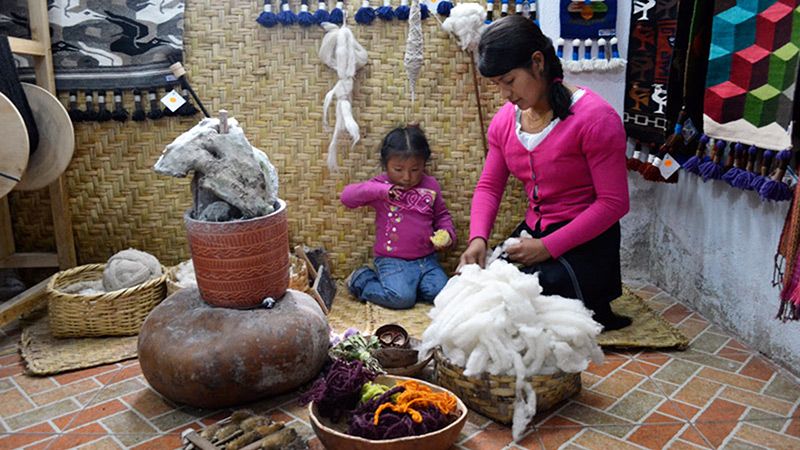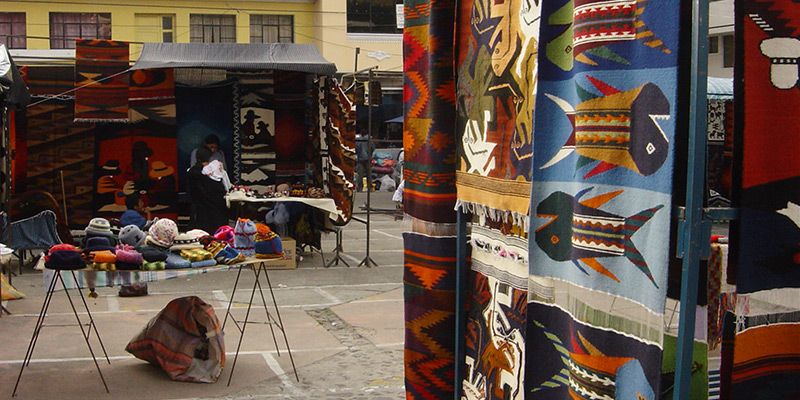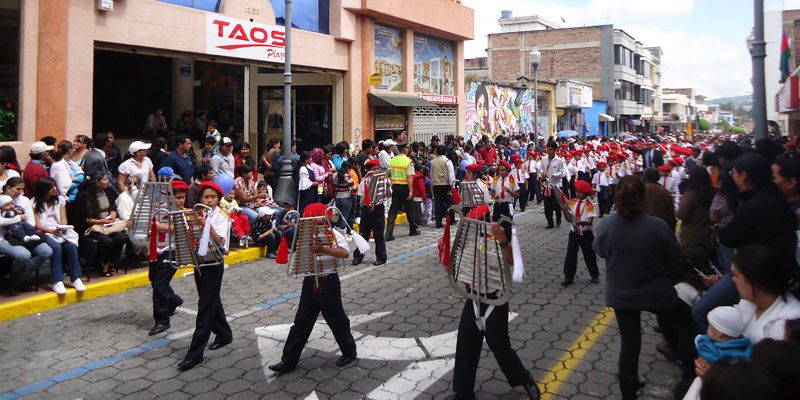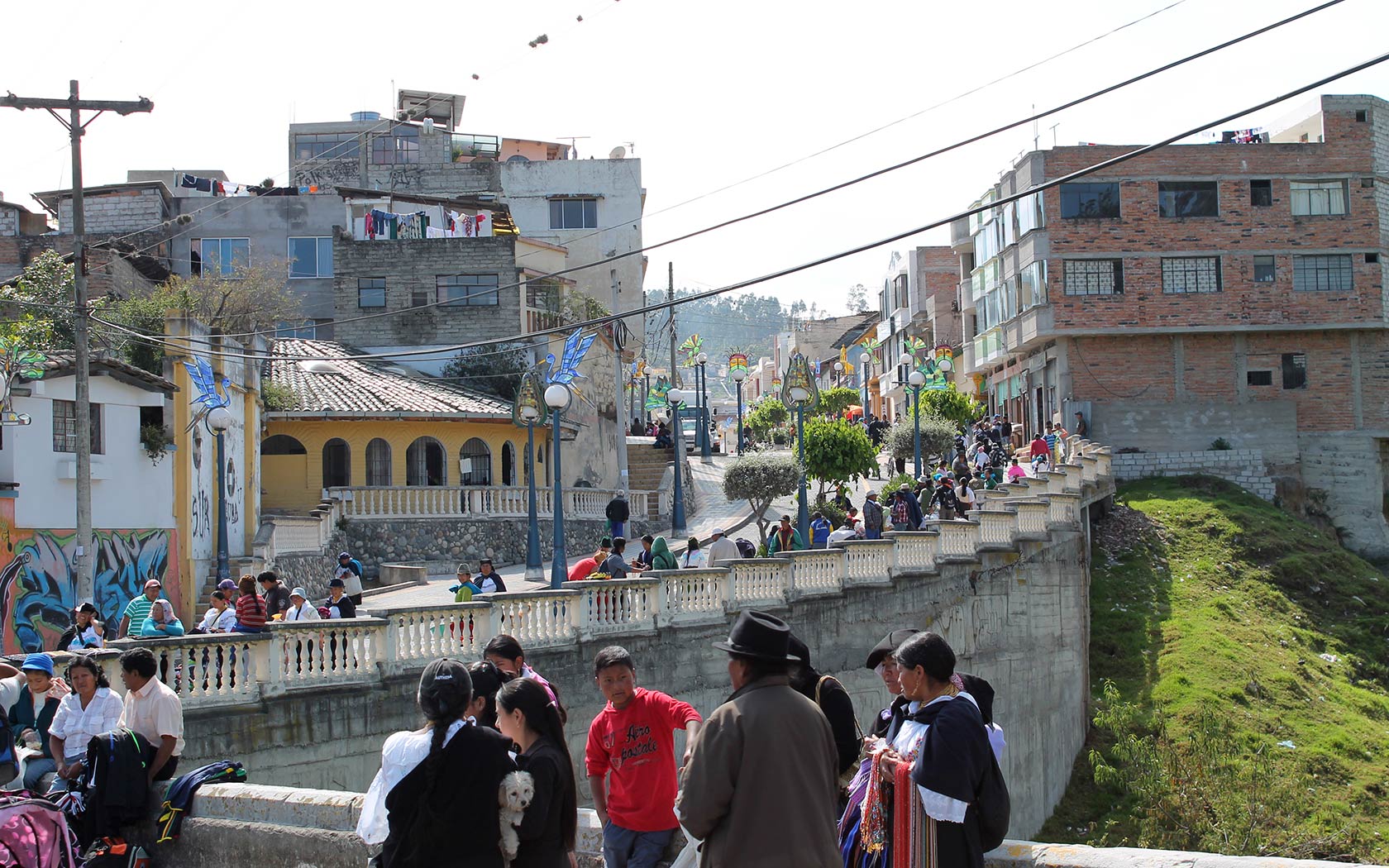If you were to simply take the word of the odd charity group, overhyped TV documentary, or any old naysayer set on prolonging the myths of past, then you’d find it very hard to believe what we’re about to tell you: that deep within the sierras of Ecuador, around 9,000 feet above sea level, an indigenous community is thriving! Yes, an indigenous community! Believe it or not — and with all stereotypes aside — the Otavaleño community in Otavalo, Ecuador is busting out of the shackles of the past, luring thousands of visitors each year to see what’s long been considered one of the most successful contemporary indigenous communities in the world. Here’s a bit of background!
Hey, I know you!
Seen that Andean music band playing the flute to a pre-recorded backing track on your street corner? From New York to Istanbul, from the heart of Sydney or central London, musical exports from the Otavaleño community have ridden the wave of success stemming from growing interest in music and culture from the Andean highlands. So, don’t think twice if you feel like you see some familiar faces in Otavalo when you visit!
A bit of background

Otavaleño entrepreneurship goes back a long way! It’s said that even before the occupation of Otavalo by the Incan empire in the 15ths century the locals were talented producers of textiles, weaving into daily life not only fabrics but suave business skills and a solid base in agriculture. Here’s a bit more…
- When the Spanish took control of what is now Ecuador, and while other indigenous communities in Ecuador succumbed to the heavy hand of colonial rule, the Otavaleños managed to maintain a sense of tradition, channeling their skills into the textile factory run by Spanish grant-holder Rodrigo de Salazar, who put their skills in weaving hard to work.
- Over the years, this forced exposure to new technologies at the hands of the Spanish meant the Otavaleños were well equipped to handle a post-colonial world, slowly developing their own economic model around textiles and handcrafts which is still alive and strong today.
- To learn more about this piece of history, visit the Obraje Weaving Museum in Otavalo, or the Hacienda Zuleta where things really got going in the 1960s!
Rise and shine like an Otavaleño
Forget secret portals or time travel machine — jumping back in time is as easy as waking up at around 5 in the morning on Saturdays in Otavalo for a visit to the animal market. While an early rise is easier said than done, if you miss the hour or two of live livestock action in Otavalo, you’ve missed the whole show! Few tourists head here given the time of the morning animal trading takes place, so it’s a worthwhile outing if you’re looking for authenticity and a breather from all the camera snapping. The scenery is stunning, and highly nostalgic given Otavaleños are big on tradition. There’s just one word of warning: for those passionate about animal rights, it’s not necessarily the place for you. To get here, cross the bridge on Avenida Colón and follow the animal-wielding locals (or the smell of dung.)
Textile time

Drumroll, please… It’s Otavalo’s main attraction, the textile and craft market. Forget the rest, Otavalo has no competitors when it comes to its colorful, aromatic and culture-drenched market, which overflows from the town’s Plaza de los Ponchos, into side streets and as far as the sound of Andean tunes and chit-chat in Quichua will take you. To find out why Otavalo has built itself such a reputation all you need to do is spend a few hours at this incredible market! Beyond the textiles and handcrafts, this is what you’ll find:
- fruit and vegetables galore, including a gobsmacking variety of potatoes
- herbal products from the jungle
- alpaca cardigans and other clothing items made from this soft, soft wool
- tagua nut jewelry
- Otavalo dolls
- Panama hats (which were imported to the Panama canal for its workers, way back in the days of US president Roosevelt) fake shrunken heads (the Shuar’s have the real ones)
- spices, raw foods and snacks
- and let’s not forget, members of an ancient community partaking in a tradition that has its roots in pre-Colombian times.
Fast facts to keep in mind

Yamor festival
In early September each year Otavalo burst to life with the Yamor festival, which blends ancient Incan traditions with Catholic practices. With fancy dress, dance, food and a show of long-held customs, it’s a must if you’re in Ecuador in September.
Weather
Could Otavalo’s weather have something to do with its greatness? While you’ll be closer to the sun at just over 8,000 feet above sea level (and should use sunscreen), average highs in Otavalo are in the mid 60 degrees Fahrenheit!
From Quito
Two hours by bus, Otavalo can be done and dusted in a day — though you’ll probably want to stay longer! Buses leave the Carcelan bus station in northern Quito various times during the day. To get back to Quito, grab a bus 3 blocks from the Plaza de Ponchos on the corner of Calle Athaualpa and Calle de David.
In case you missed it, our Spanish school in Ecuador offers classes in Otavalo… both at our Spanish school in Otavalo and with families from the Otavaleño community!
Originally published on Ailola by Jayson McNamara on March 13, 2015.
